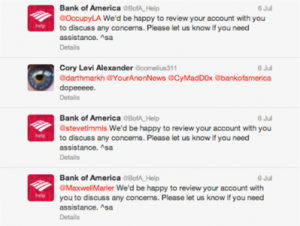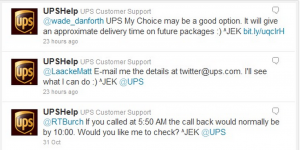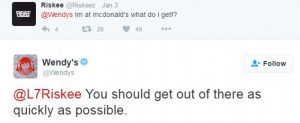How to Make your Boring Brand Fun And Engaging on Social Media
Being fun as a brand can be difficult. And on social media, there’s no difference.
It is especially difficult to be fun on social media if you are within an industry that is considered to be boring. What if you would sell walking frames? Not the most exciting niche if you’re trying to promote yourself in a fun manner, right?
The truth is that no matter what type of brand you are and what you sell, you can make your brand more fun and exciting on social media, and everywhere else for that matter. Just because the industry you are in is notoriously known for being boring doesn’t mean you have to be!
We see brands in the candy industry, fashion industry, and soda industry that are all creating fun and engaging content that gets people interested and excited in them, but it is the brands who aren’t in the industries like the ones mentioned that are struggling.
So should you completely ignore social media, or should just face the fact that you’re not supposed to be fun? That you’re supposed to bore your social media followers to death?

No matter what industry you are in, no matter what you’re doing, there’s something unique about you that is separating you from your competitors.
A big issue with humour in marketing and within certain industries is that some brands take for granted that they should be boring if they enter a boring niche just because that’s how it has always been and that’s what the “norms” expect from them.
That is completely wrong.
Let’s say you start selling toilet paper. Why should you present yourself as boring on social media and as a whole? Is it because your customers don’t like to have fun? Is it because they don’t like to laugh?
The truth is that humans love to laugh. No matter how grumpy they might seem. This means that just because you are entering a niche that is known to be boring doesn’t mean that you should be too and follow that.
In fact, these industries give you a tremendous opportunity to stand out from the crowd, come closer to your audience and build better relationships with them than your competitors ever will, by doing something your competitors don’t – humour.
1. Understand what is already working
Okay, so by looking at what people are already doing, you can implement the things that are already resonating with people and making them entertained, but what do you do when no-one else in your industry is using humour?
You look at other industries that are more fun, of course!
After all, often times, the customers of boring customers are the customers of fun companies.
Think about it: a customer who regularly buys toilet paper is also probably someone who has or regularly buys Coca-Cola. The big difference is that Coca-Cola presents themselves in a completely different way than a toilet paper brand does. But at the same time, the customers have the exact same humour.
In theory, this would mean that you, as a boring brand, would be able to use the same humour as a “fun” brand and get great results from it.
Of course, when using humour on social media, you should always have your personal touch. Don’t look at brands from other niches and copy their humour strategy. Based on your target audience, you need to tailor your humour to the people you are reaching. What’s more, you shouldn’t look at brands that are completely different from your own.
Let’s say that you’re in the car industry. This is an industry that often incorporates humour in its marketing, but what about brands that sell air filters for the car? Air filters are needed for the person who buys a car which means that the target audience is virtually the same – even though their history of humour look completely different.
If BMW gets great success from a social media marketing campaign that incorporates humour, this would mean that you can also generate amazing results as a brand that sells air filters if you use a similar humour in your campaign.
2. Use storytelling
We all know the power of storytelling. What’s even more powerful is visual storytelling. And what’s great about that is that social media offers a ton of opportunities for you to use visual content to market your brand – thus allowing you to implement both humour and storytelling. If you’re unfamiliar with the many benefits of isualstorytelling, take a look at these statistics:

When looking to marketing your brand on social media by using humour, you can further empower your message by using storytelling. By using it, you can make your brand more relatable, and impact your audience on a much deeper, emotional level.
Something worth pointing out is that just because you want to make your boring brand more fun on social media doesn’t mean that you need to use humour all the time. Think of yourself as a boring teacher. Everyone is falling asleep because you’re holding long, boring lessons just going on and on about a subject that no-one understands.
But what if you would change up your lessons and make them more engaging? What if you would start teaching with a bit more passion and gestures? What would happen if you’d start using storytelling and talk about how the subject you’re teaching today helped you do something a while back?
Chances are, you would become a lot more appealing and a lot less boring. People would look forward to your lessons instead of wishing they would end.
In other words, it is possible to make your boring brand less boring on social media without necessarily joking all the time.
3. Be human and show your personality
When you’re presenting yourself as more human by showing more personality, people will have an easier time resonating with you. When they do, they’ll find you more interesting to have a discussion with, and interact with, thus leading to them seeing you as less boring.
Your personality has a lot to do with your target audience, and your brand’s personality should resonate with the people you are trying to target. If you have a conservative personality and use an old-style language with lots of difficult words, and your target audience consists of teenagers, chances are, you’ll scare them away after your first interaction with them. It is therefore highly vital that you know the people you are trying to reach, and know their personality, what they find appealing, what they like, what they dislike.
If you haven’t developed your brand voice and brand personality, now is the time.
Based on of what you learn when you define and understand your audience, you can start shaping your own personality.
What language will you use? What type of visual content will you use? Will you use humour? If so, what kind?
Being human also refers to the way you handle customer service and interacts with your audience. If you’re not human, you’re a bot. And people hate automate answers and bots. They make you boring!
Hopefully, your template automated responses don’t fail as much as Domino’s pizza:

Or Bank Of America:

In order to avoid being viewed as boring, you need to provide real answers that are full of personality, and that shows that it was written by a real person who had actually looked at the message it is responding to.
Like UPS:

4. Establish a personality
I’ve already touched upon the personality part of avoiding being boring, but this goes further than just how you respond to individual messages.
If you truly want to make an impact and become remembered, you need to develop a personality that screams your brand and that everyone can resonate with. Doing this will allow you to build a name for yourself and always be on top of people’s minds.
The best example of this is Wendy’s who have been completely dominating their space by having a daring, edgy, sassy and highly unique brand voice.

Brands like Wendy’ get a ton of exposure for being unique, and if you can successfully build a unique brand voice, you can avoid being boring, while also getting tons of exposure.
5. Share relevant content
This is probably the most important part of this article.
If there’s anything that will make people tired of your brand and make them see you as boring, it is not sharing relevant content.
Your audience is a special type of people that have special interests, and therefore, it is extremely important that you provide them with content they expect from you, and content that they actually care about.
If you’re selling ski boots, then obviously your customers are people who are interested in skiing and want to see content related to it. They don’t want to see photos of cats and dogs because that’s not what they expect from you, and secondly, the majority of them probably don’t have any interest in them.
By sharing relevant content that circulates around your industry, you can position yourself as an industry expert and attract more people who are interested in the niche you’re operating in.

